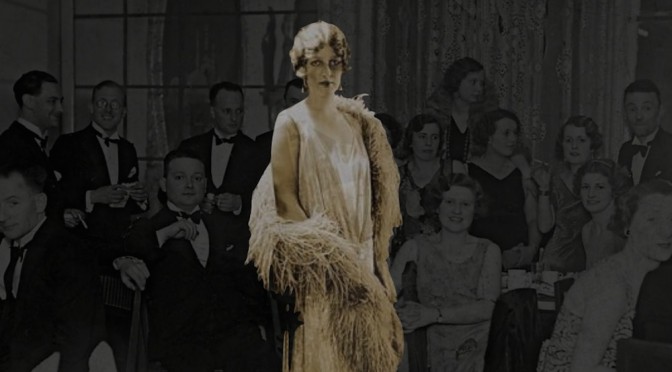Great Aunt Gertrude
In writing about Ximene, Brian drew inspiration from the fascinating stories told by his great aunt Gertrude whilst he helped her tidy up after her monthly “Soirees”. She and her husband ran a successful repertory company and the guests were her theatrical peers. She called Brian “daaarling” and encouraged him to smoke Gauloises because she liked the smell.
Great Aunt Gertrude claimed John Stanley, founder of the Stanley Dynasty as an ancestor and recent research has found nothing to nullify that claim.
The Coach Road
The identification of the Stanleys as ancestors had real meaning for Brian as he had grown up in the industrial town of St Helens, which adjoins the extensive Stanley estates of Knowsley and Lathom, much of which still exist to the present day.
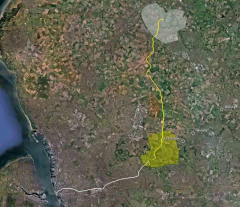
As a child, Brian had played on the “coach road” between Knowsley and Lathom; a private road providing express contact between the two estates. By the time of Brian’s childhood, it was a place of mystery and excitement; a well paved secret highway, mostly overgrown, running through farmers fields.
King of Mann
Aunt Gertrude told Brian that John Stanley started life as a foresters son and within his lifetime became King of the Isle of Mann.
Again for Brian, this had an instant impact. As a child one of the greatest delights was for him to visit the Isle of Mann, travelling on one of the old steamers out of Liverpool.
The Frenchwoman
 Aunt Gertrude talked about an unnamed “French Woman” who was John Stanley’s first wife, the mother of John Stanley’s eldest son and who facilitated John’s rise to prominence. At first glance, this was not supported by any genealogical records. I found no specific record of “the Frenchwoman” and have no idea where Auntie Gertie got her information from. However she told her story with conviction, she implanted images in my mind which I have never forgotten.
Aunt Gertrude talked about an unnamed “French Woman” who was John Stanley’s first wife, the mother of John Stanley’s eldest son and who facilitated John’s rise to prominence. At first glance, this was not supported by any genealogical records. I found no specific record of “the Frenchwoman” and have no idea where Auntie Gertie got her information from. However she told her story with conviction, she implanted images in my mind which I have never forgotten.
The Chevauchee
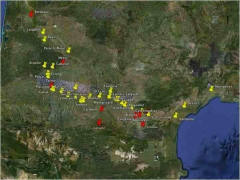 When I started my own investigations I discovered that John was in what is now Southern France with the Black Prince’s army in 1355 -1356 and was present at the battle of Poitiers when English forces captured the French King John. I became particularly interested in the year before Poitiers when the Black Prince carried out a cavalry raid (chevauchee) starting at Bordeaux in the west and penetrating as far as Beziers in the east. This whole campaign is shrouded in mystery and the chroniclers disagree about timing, duration and places visited.
When I started my own investigations I discovered that John was in what is now Southern France with the Black Prince’s army in 1355 -1356 and was present at the battle of Poitiers when English forces captured the French King John. I became particularly interested in the year before Poitiers when the Black Prince carried out a cavalry raid (chevauchee) starting at Bordeaux in the west and penetrating as far as Beziers in the east. This whole campaign is shrouded in mystery and the chroniclers disagree about timing, duration and places visited.
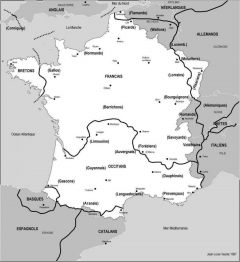 If there was a Frenchwoman, here was the mechanism by which John might have met her. Almost immediately Brian was formulating which were to form the basis of a story, but which story? Who would be the main protagonist?
If there was a Frenchwoman, here was the mechanism by which John might have met her. Almost immediately Brian was formulating which were to form the basis of a story, but which story? Who would be the main protagonist?
It was a cyclical process; visits to libraries, nearly four months in total in the south of France. It became increasingly obvious that this was a story about John meeting Ximene and that the meeting led to a life-changing experience for both of them.
Occitan
Whilst in the south of France and specifically in a ski resort in the Pyrenees, Brian became aware that many of the local people speak their own language, Occitan. There is an Occitan independence movement with a healthy membership.
This was completely new to Brian and so an understanding of a history of the relationship and differences between the French and the peoples of Occitan became essential.

From time to time he returned to Occitan and came to fall in love with its rugged beauty.
The Cathars
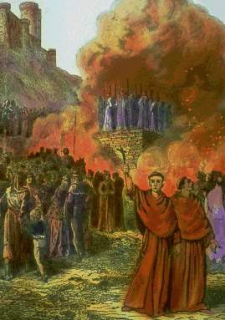 It did not take long for another item to be added to Brian’s list of research topics. It was virtually impossible to discuss the history and culture of Occitan without discussing the Cathar religion and the genocidal Albigensian crusade.
It did not take long for another item to be added to Brian’s list of research topics. It was virtually impossible to discuss the history and culture of Occitan without discussing the Cathar religion and the genocidal Albigensian crusade.
Concepts of people being thrown out of their homes and being burned to death in their hundreds seemed beyond belief. Brian learned that the true story of the Albigensian crusade was, if anything, worse than described in these first discussions.
First Steps
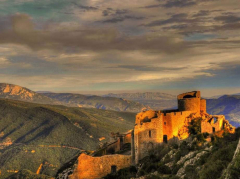 Brian began to make notes about the stories Auntie Gertie told but for long period he was so busy earning a living that he put the notes to one side except for occasion visitations in holiday periods.
Brian began to make notes about the stories Auntie Gertie told but for long period he was so busy earning a living that he put the notes to one side except for occasion visitations in holiday periods.
Then an opportunity presented itself. For over twenty years Brian worked throughout Australasia and S E Asia as a trainer, lecturer and consultant in Engineering Management.
As there was a dearth of published material dealing with the subjects covered, Longmans published a whole series of books to support his lecture tours. This made writing a central part of his life.
Slowly he made time to revisit the notes he had made. In trying to match Great Aunt Gertrudes stories with recorded history, he found himself reviewing the political and social forces which lead to the Wars of the Roses. This became yet another research topic.
Six powerful women
He identified sixth powerful women who shaped events and concluded that their actions were in some way co-ordinated. He discovered that in one way or another they all had contact with John Stanley. He speculated on the presence of a seventh person, probably a woman, who facilitated the introduction of the others to their positions of influence.
Circumstantial evidence indicated this could be “The French Woman”. She, not John Stanley became the protagonist in the books. Brian has given this shadowy woman a name; Ximene. he has told her story.

Ximene’s adventures were first documented in hotel rooms and alongside hotel swimming pools during Brian’s years touring the southern continents on various lecture tours. In those early years, almost everything he wrote caused a need for additional research.
The progression of revisiting notes he had made of conversations with Aunt Gertrude was relatively slow, there was so much to learn.
